Drive Staff October 21, 2022 All Feature Vehicles

Mecum’s offering of Rogers’ Classic Car Museum’s collection of 230 cars brought standing-room-only crowds of more than 3,000 bidders and spectators the first weekend of March. The auction, held in Las Vegas, achieved $9,529,350 in hammer-price sales, proceeds which benefited The Rogers Foundation, which supports arts and education in southern Nevada.
Beverly Rogers, wife of the late Jim Rogers, was present to help see the cars off to their new owners and to show support for the foundation’s mission. “There are really good people in this town, and Jim was passionate about making it a better place to live,” says Rogers. “The future is in the children and making sure they’re educated because it’s the only thing that will build a foundation for a better life.”
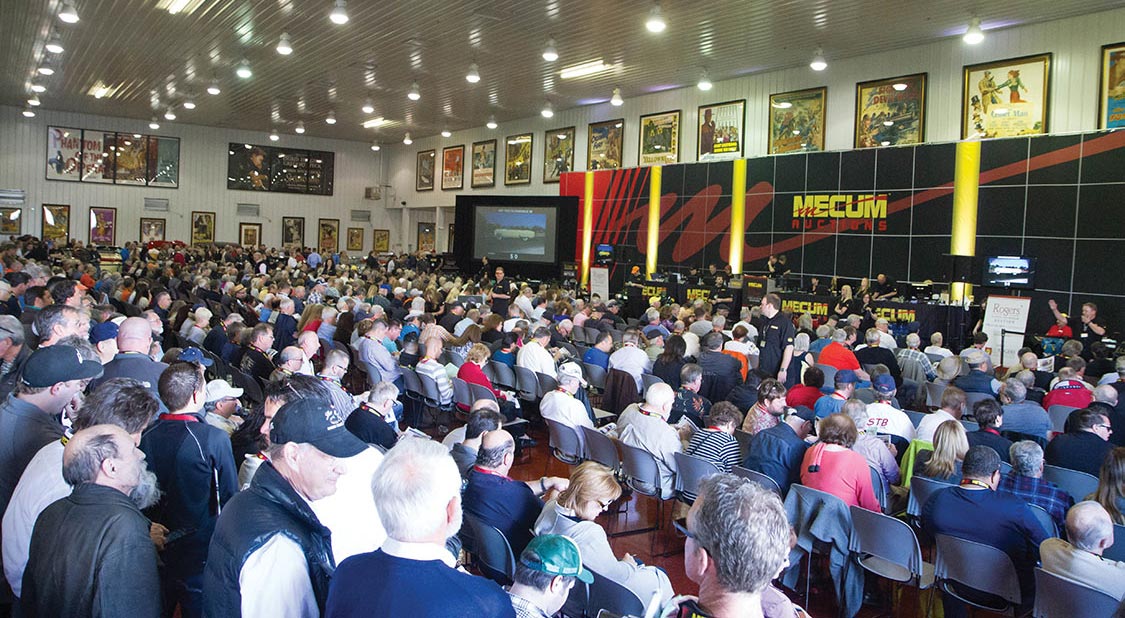
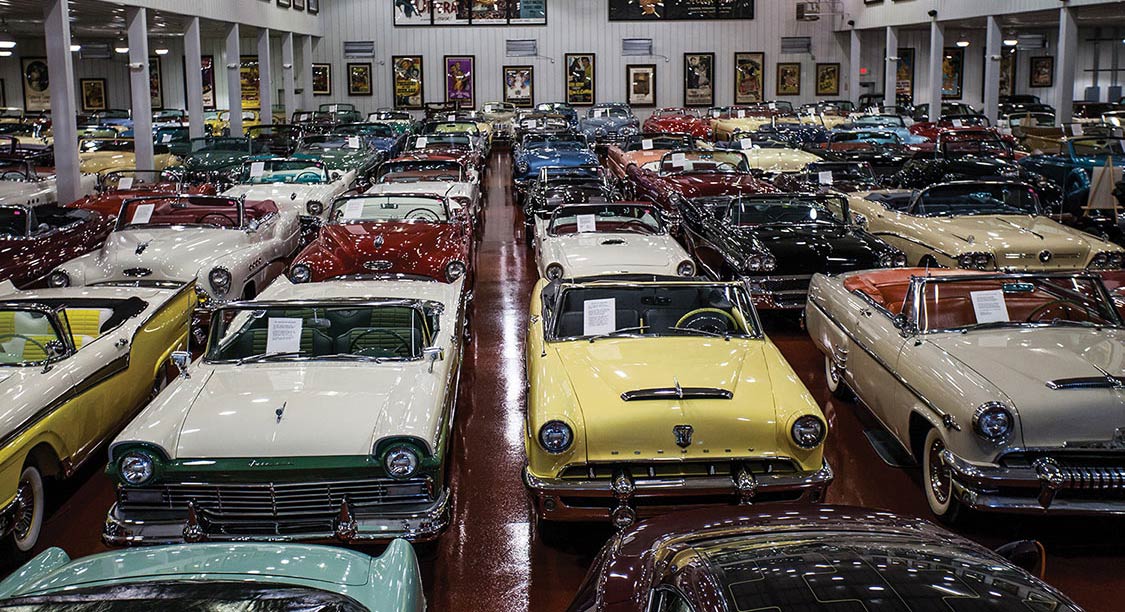
The 230-plus-car assemblage consisted of a considered grouping of primarily American classics sprinkled with European luxury rides. Museum Curator Mike Pratt says he was pleased with the results, noting that it was still difficult to see the cars go. “It’s bittersweet because Jim and I spent a lot of time and money collecting these cars,” Pratt says. “I’m glad I’m able to be here in his absence.”
The top 10 sales at Roger’s Classic Car Museum auction:
For access to complete auction results and other member benefits, join Mecum’s free InfoNet service offered at Mecum.com. There will be an auction of 1,000 collector cars in Houston, April 9-11. For more information on an upcoming auction or to register as a bidder, visit Mecum.com or call 262.275.5050.
As the Camaro rolls through the final year of its fifth generation, Chevrolet asked five designers who have contributed to the sporty car’s design to reflect on the styling legacy that helped create an icon.
“While Camaro has evolved with cultural and design trends, it has consistently represented the approachable, attainable sports car with an emphasis on fun that’s evident in its styling,” said Ed Welburn, vice president of GM Global Design.
First Generation: 1967-69
Ed Welburn, vice president of GM Global Design
Currently owns: 1969 Camaro
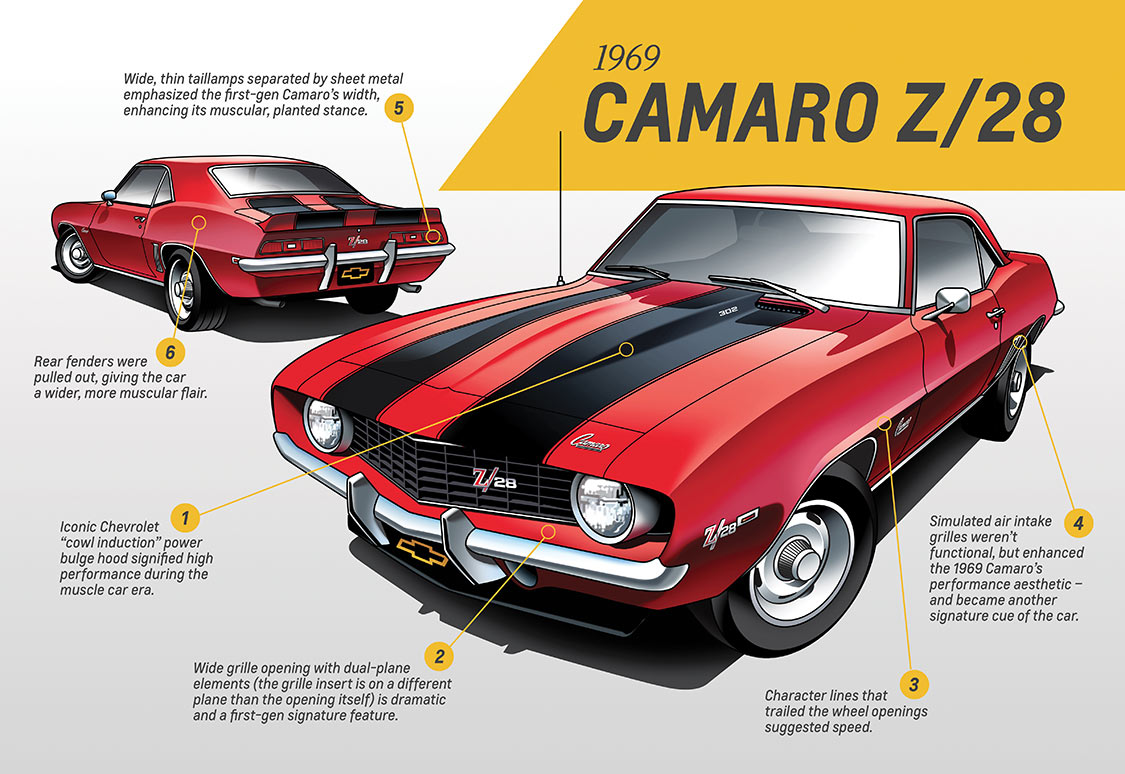
“The Camaro should not have been a design success, as it was based on an existing architecture and admittedly hurried to market to address the personal coupe revolution occurring with Baby Boomer customers,” said Welburn. “However, the first generation Camaro delivered a pure, classic proportion that will forever be regarded as one of the best-looking cars of its time.”
Camaro Second Generation: 1970-81
Design analysis: Ken Parkinson, executive director of design, Chevrolet Trucks and Global Architecture
Currently owns: 1968 Camaro

“I’ve always loved the ‘68 Camaro, but for some reason it was the second gen car I’d find myself sketching during high school math,” said Parkinson. “It was a radical departure from the first gen. For the first time, it was built on its own dedicated architecture, which gave the design team the freedom to create a pure expression. What that team created was a powerful expression of American muscle, influenced by a European grand-touring aesthetic. There was simply nothing else like it.”
Camaro Third Generation: 1982-92
Design analysis: John Cafaro, executive director, Chevrolet Global Car Design
Previously owned: Third generation Camaro 1LE race car
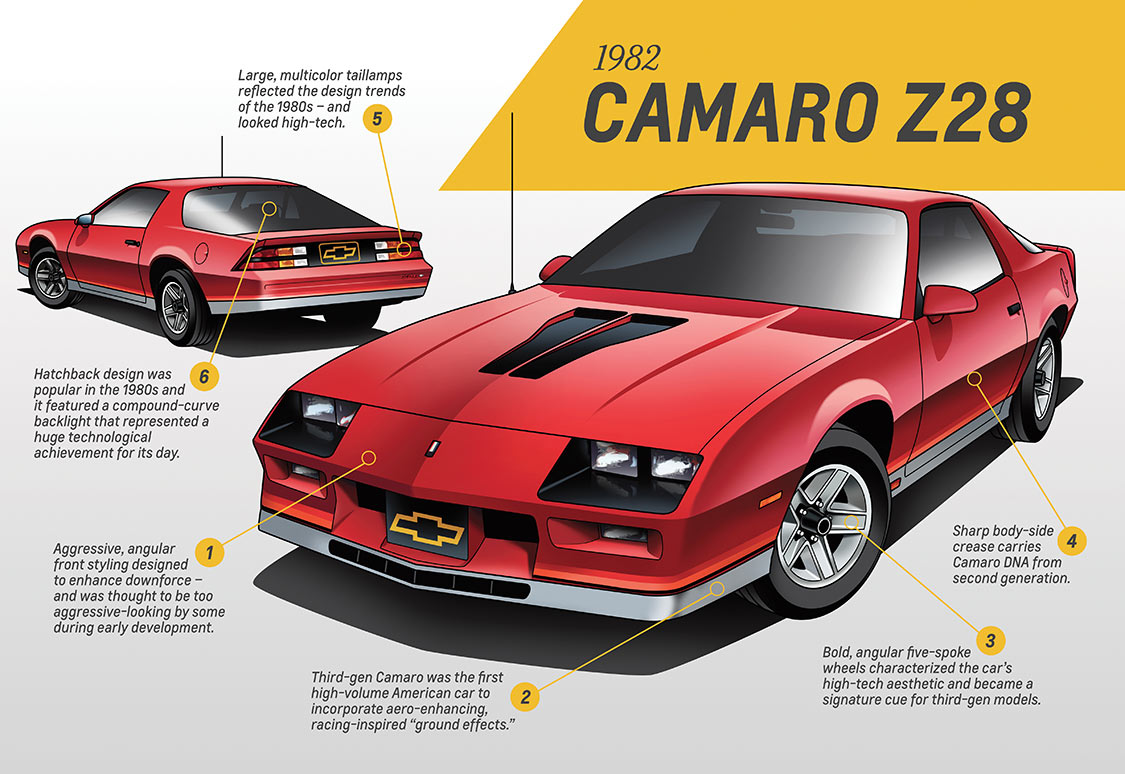
“The third generation Camaro represented a distinct breakaway from the previous generations, which were undeniably influenced by European grand-touring cars,” said Cafaro. “This was a uniquely American design with a form developed for function, and its aggressive front-end styling was deemed almost too aggressive by some in the company.”
Camaro Fourth Generation: 1993-2002
Design analysis: Kirk Bennion, Chevrolet Camaro exterior design manager
Currently owns: 1993 Camaro Z28
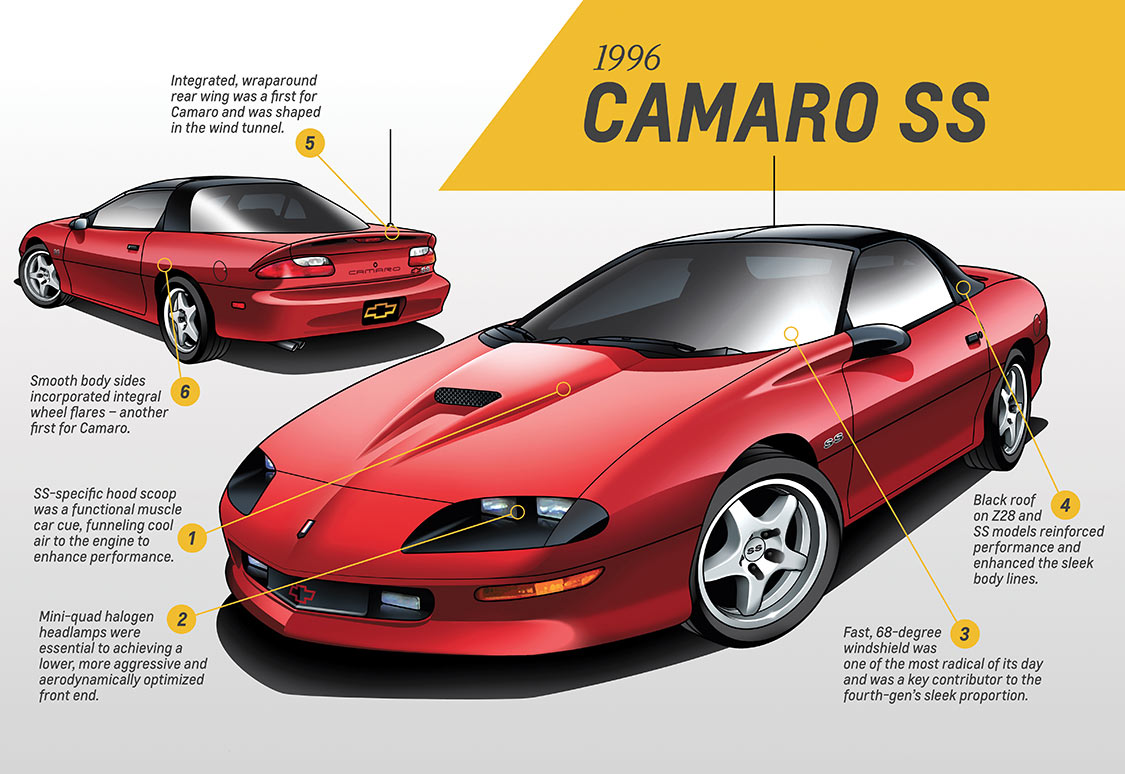
“It was a very aggressive design intended to evolve the proportion from the third generation car with a provocative exterior and greater aerodynamic performance,” said Bennion. “It has a very sculptural form vocabulary that was definitely all-new for the Camaro.”
Camaro Fifth Generation: 2010-15
Design analysis: Tom Peters, Chevrolet Camaro exterior design director
Currently owns: 1969 Camaro

While the iconic 1969 Camaro was the inspiration for the fifth gen Camaro, its design had to be more than simply a 21st century update, according to Peters. “Distilling the timeless essence of the design and translating into a fresh, contemporary Camaro was a challenge. The final design perfectly straddled that razor-sharp line between heritage and retro.”
Two groundbreaking concept tires unveiled by The Goodyear Tire & Rubber Company at the 85th Geneva International Motor Show could radically change the role of car tires in the future. Though the two tires are concept products, the futuristic technologies stretch the imagination and provide a glimpse of what practical innovations may be on the horizon.
The first concept—named “BHO3”—offers the possibility of charging the batteries of electric cars by transforming the heat generated by the rolling tire into electrical energy. The second concept— named “Triple Tube”— contains three tubes that adjust tire inflation pressure in response to changing road conditions.
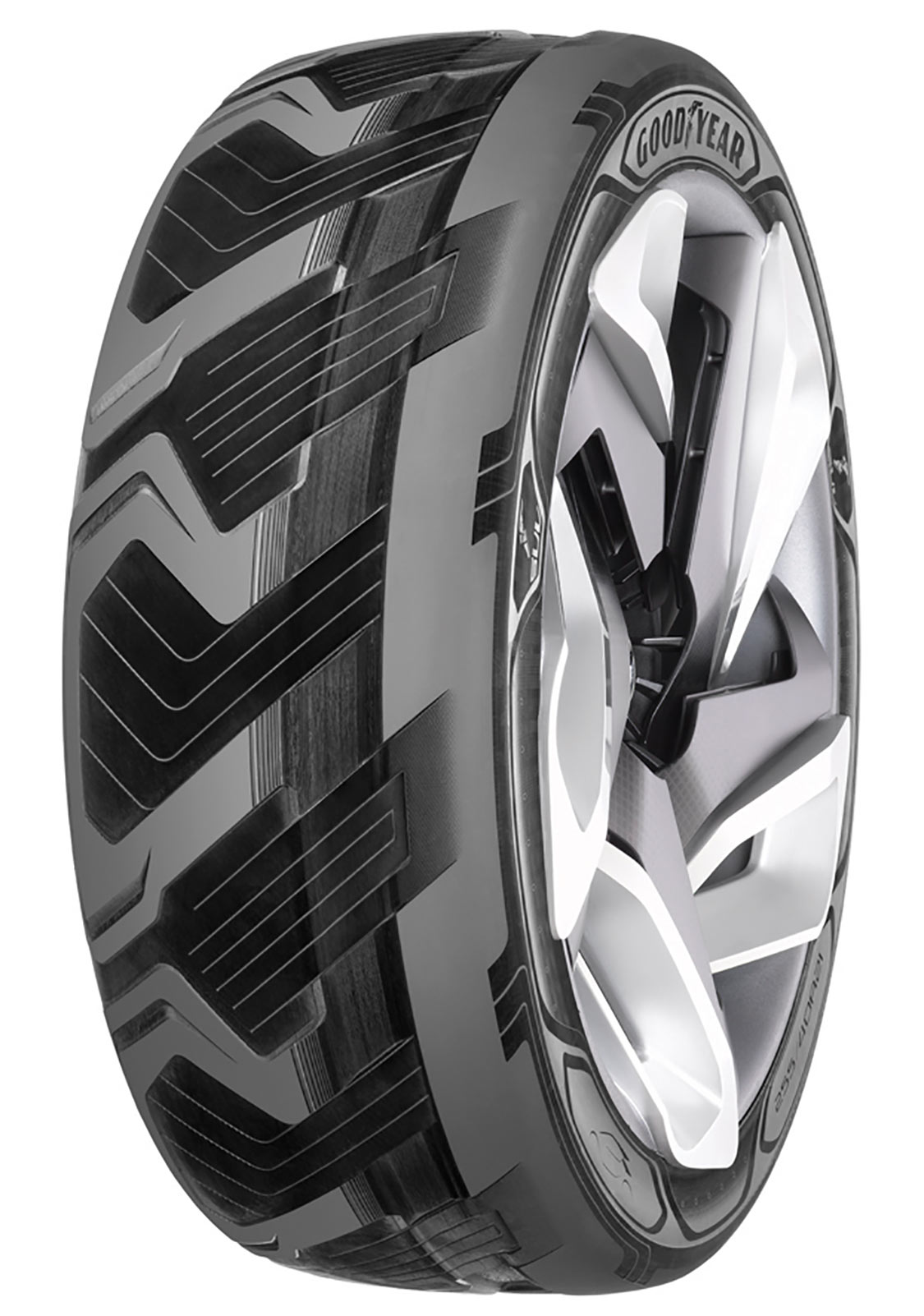
“These concept tires reimagine the role that tires may play in the future,” said Joe Zekoski, Goodyear’s senior vice president and chief technical officer. “We envision a future in which our products become more integrated with the vehicle and the consumer, more environmentally friendly and more versatile.”
Although these tires are future concepts, Zekoski says they represent an essential aspect of Goodyear’s innovation strategy, instilling a forward-looking, market-backed mindset in the company’s research and development teams.